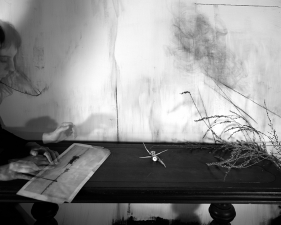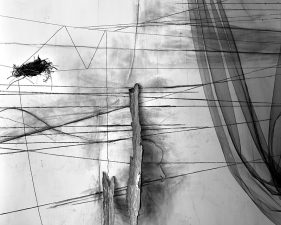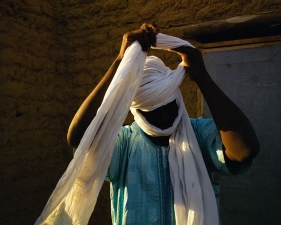tà hierá
tà hierá is an ancient Greek term that has no equivalent in contemporary language. Commonly translated as the holy or the sacred it is the Greek word closest to religion and that which refers to the gods.
Religious rites are typically what we associate with the sacred, but in our highly secularized global society, where religion is not the mainstay of every culture, how do we now define sacred? Where do we find ritual in a global metropolis? What do we learn about ourselves when we look at an image of the Large Hadron Collider in CERN compared to the stoic solitude of an ancient offering plinth in Calcutta?
Laura McPhee’s contemplative large format photographs of life in India are possibly the purest expression of our common associations to the sacred, documenting the Durga Puja in Calcutta a highly orchestrated ritual that has been practiced since the middle ages. Jeffrey Milstein’s 200 Saints depicts a wall of crucifix’s hanging above a bed in a Cuban interior.
Jehad Nga’s Untitled #21 shows a faceless man tying his turban, a great swathe of white fabric in the morning light, shot in Mali on assignment, investigating the ongoing conflict in this troubled West African nation. In early 2012, a group of radical Islamists affiliated with Al Qaeda took control of Mali’s northern half, declaring it an independent state imposing the rules of Sharia law.
Regina DeLuise’s Self Learning Book of the Art of Tibetan Painting and Covered Statue, both taken in the temples of Bhutan, are platinum palladium photographs of the most delicate textural nuance. Jed Devine’s platinum palladium photograph of the Feast of San Gennaro festival, New York’s longest running religious festival, is humorously composed to include the ‘shish-ka-bob’ and ‘win half a pound of gold’ signs flanking the national shrine of San Gennaro at the Church of the Most Precious Blood in Little Italy.



























